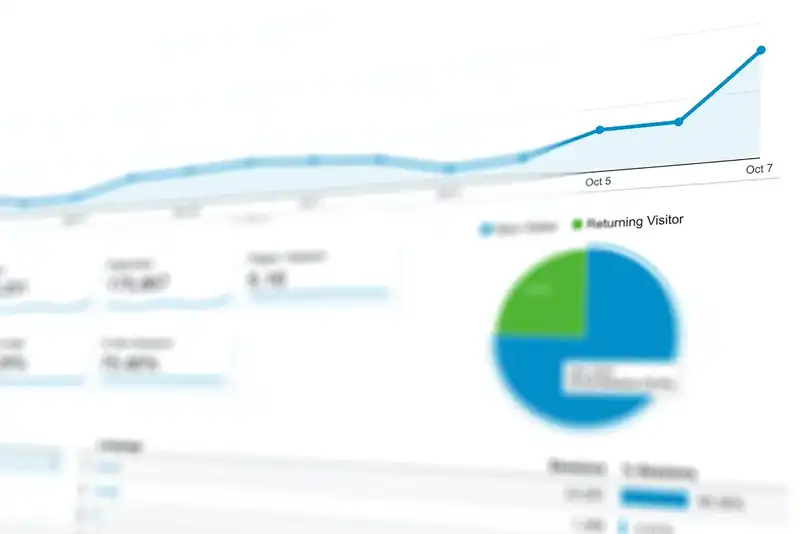E-Commerce Data Analytics - 5 Types of Metrics to Track
Introduction to E-Commerce Data
Online companies are confronted with unlimited customer data, marketing campaigns, and other performance metrics, making it challenging to decipher their true meanings.
With e-commerce data analytics, online stores can define customers' areas of interest, pain points, and needs to improve their shopping experience. Through continuous improvement, organizations can boost online sales, income, and customer service.
What is E-Commerce Data Analytics?

E-commerce data analytics involves gathering and interpreting information from every area that impacts an online store in order to understand consumer patterns. These trends typically include customer behavior, demand, buying, and engagement, and they enable businesses to make data-based decisions to improve marketing strategies, sales, and income.
This specific type of analytics uses metrics that quantify various activities throughout the customer's online shopping journey, from brand discovery to repeat purchases. By studying these areas, companies can improve retention rates and customer satisfaction.
With the constant drive in technological advancement, studies show that the number of e-commerce shoppers is expected to reach over 2 billion in 2021. This continuous influx of online consumers has experts predicting that the industry will gross up to $6.54 trillion in sales in 2022.
To take full advantage of this lucrative retail sales channel, an ecommerce business must have a thorough understanding of what its target audience wants. The best way to do this is by collecting critical consumer information that describes their pain points and preferences.
However, online retailers need a sophisticated analytics process to translate their collected data. Otherwise, the company is left with large volumes of raw, incomprehensible data.
5 Key Digital Market Metrics to Track

There are numerous amounts of metrics that companies can choose to track if they please. However, many businesses make the mistake of monitoring too many metrics at one time, which can overwhelm their system and developers. This makes it challenging to interpret and collaborate all of the information.
Instead, organizations should focus on the five primary e-commerce metrics, discovery, acquisition, retention, advocacy, and conversion rates.
Discovery

The discovery metric refers to the information collected from the audience at the time they became aware of a brand. This data often includes the search or promotion that led them to the site, their demographic, location, areas of interest, and overall behavior.
Discovery commonly stems from search engine and social media advertisements, making it crucial to track other metrics.
- Reach is the number of users that view a marketing email or social media ad. The best way to maximize reach is to expand subscribers and followers on social media platforms by posting regular promotions.
- Impressions are the number of times content was viewed. This metric differs from reach because it counts every time a promotion was opened, whereas reach only counts the unique users exposed to the content. Therefore, the impressions metric is always higher than reach, as a user can view content more than once.
- Engagement refers to the number of subscribers and followers that engage with a brand. In terms of social media, this often results in likes, comments, and shares.
Acquisition

Acquisition is the number of users that visited a site, as well as the respective cost. The cost of acquisition refers to the amount of time and money invested in attracting consumers to an online store.
There are a few different types of acquisition metrics that e-commerce businesses should track
- Click-through rate (CTR) is the percentage of online users that click on a promotion, link, or ad compared to the total number of users that viewed the content.
- Cost per lead (CPL) refers to the average cost it takes to generate a new lead.
- Cost per acquisition (CPA) measures the cost of the overall customer acquisition.
Conversion

Conversion is the process of converting first-time visitors into returning customers. Just because a user makes a purchase once does not mean that they will come back. In fact, businesses often experience shopping cart abandonment, where customers add products to their order but don't finalize the transaction.
Therefore, companies need to focus on completing conversion by monitoring the various factors that impact the shopping experience.
- Sales conversion rate is the percentage of consumers that make a purchase from an e-commerce site.
- Average order value (AOV) is the average amount a customer spends on an order.
- Cart abandonment rate is the percentage of consumers that add items to their cart but abandon them before finalizing the purchase.
Retention

Acquiring customers is only half the battle of maintaining a stable income. Businesses must be able to retain shoppers to keep a regular influx of sales.
In order to monitor customer retention, e-commerce stores should monitor
- Customer lifetime value (CLV) is the amount of money a customer is likely to spend throughout their life cycle within a business.
- Customer retention vs. churn rate compares the number of customers a business retains and the customers they lose within a specific timeframe.
Advocacy

Once a business successfully attracts and retains their target consumers, they need to focus on advocacy. Studies show that consumers trust user-generated content, such as reviews and testimonials, more than promotions because they are unbiased. Therefore, companies need to foster brand ambassadors that spread positive messages about their products.
To do this, organizations need to monitor their net promoter score (NPS). This metric measures the willingness of customers to recommend a brand's products. The NPS enables management to categorize users into three segments.
- Promoters are the most loyal customers.
- Passives are customers that make repeat purchases but are not yet brand ambassadors.
- Detractors are unsatisfied customers that are unlikely to return to a business and may even leave a negative review.
Online businesses need e-commerce data analytics to define their strengths and weaknesses so they can continuously improve the customer experience.





